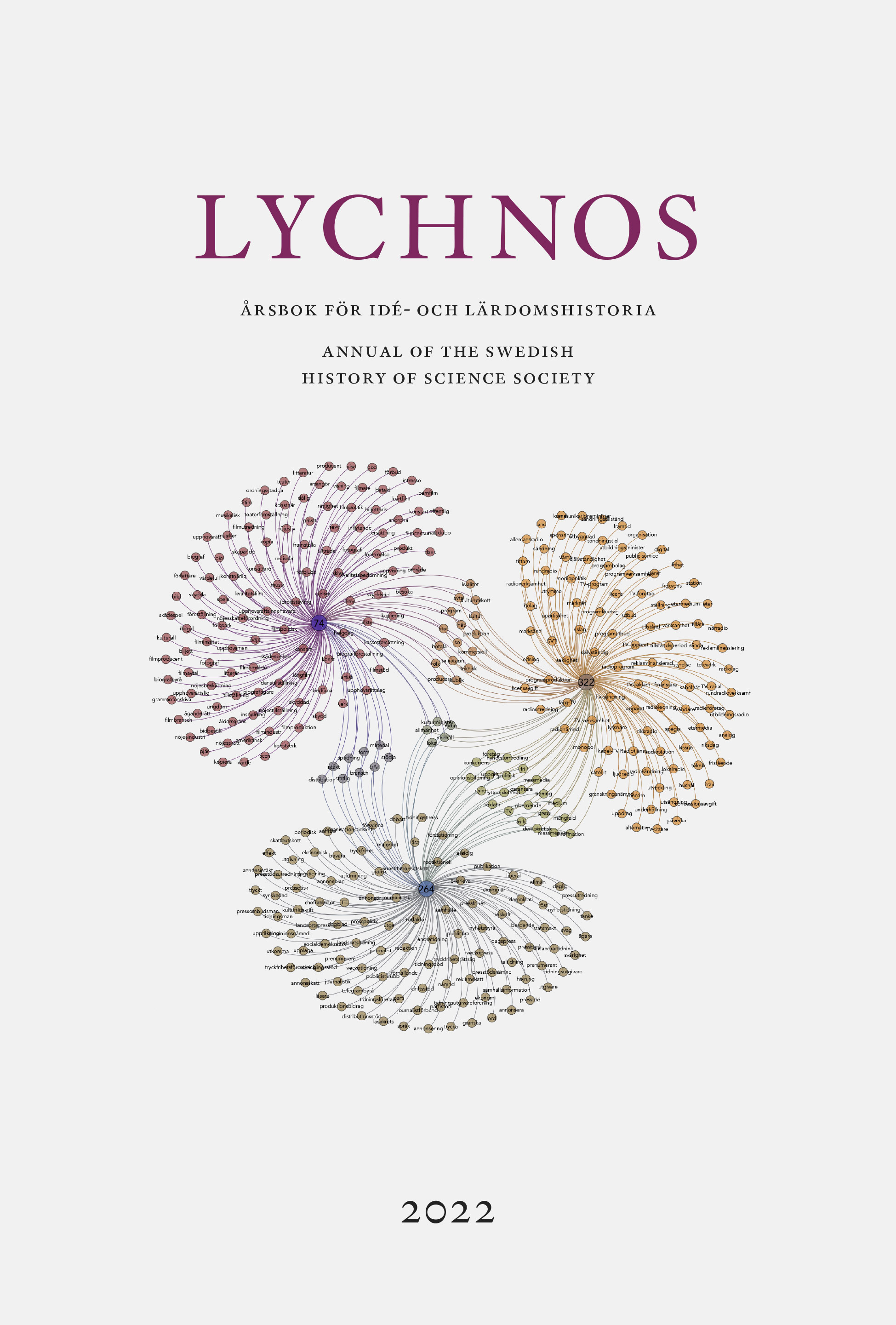How to combine close and distant reading within the history of science and ideas
Two examples from ongoing research
DOI:
https://doi.org/10.48202/24128Nyckelord:
mixed methods, digital textual analysis, spatio-temporal map visualization, close reading, distant readingAbstract
This text gives two examples of how research within the history of science and ideas can make use of digital methods through a combination of close and distant reading. The first case maps all churches and prayer chapels in the Diocese of Luleå to answer the question if a Bible belt exists in Norrland; what it (if there is one) looks like, what its characteristics are, and how it has evolved over time. The spatio-temporal visualization both clarifies patterns of religious fervor and reveals “white spots”, creating questions for further research. In the second case distributional concept analysis is performed using Sketch Engine on the corpus enTenTen20, consisting of 38 billion words gathered in 2020 from the Anglophone Internet. Lists are assembled over which words are most often used together (co-locates) with creativity. Then, the research process is outlined, where use of such distant reading tools encourages returns to close readings of other materials (for instance speeches by American presidents) in an iterative process. The cases illustrate the benefits of moving between “distant” levels where digital methods show large patterns, and more specific, detailed, “close” levels, with focus on particular points of interest. We also show how this oscillation between large-scale computer aided methods, and small-scale interpretations generate new questions. Finally, we discuss our experiences of multidisciplinary approaches to digital history, and describe setbacks and unexpected wins.
Downloads
Publicerad
Nummer
Sektion
Licens
Copyright (c) 2023 Annelie Drakman, Stefan Gelfgren

Det här verket är licensierat under en Creative Commons Erkännande 4.0 Internationell-licens.
This work is licensed under a Creative Commons Attribution 4.0 International License. The copyright for the work published in Lychnos remains with the authors.


